 |
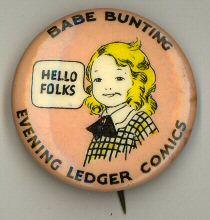 |
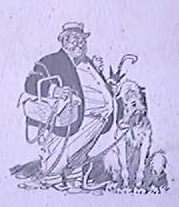 |
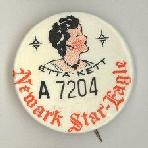
|
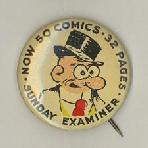 |

|
|
|
|
COMICS OF THE 1940's





ON THIS PAGE:
Babe Bunting
 |
|
Drawn By:
Fanny Cory (Originator) 34-35 |
Cory had been a professional childrens illustrator for nearly 40 years by the time she got into the comic strip business. She sold her first drawing to St. Nicholas magazine in 1896, and her work thereafter appeared in Life, The Saturday Evening Post, and Scribners. By the end of the century she had branched out into childrens book illustrations. In 1901, she did the pictures for The Master Key, the first of several L. Frank Baum books she illustrated. In 1904, Cory settled in Montana, where she married, and lived on an 1800-acre ranch near Helena. She continued to illustrate childrens books in a style influenced by Howard Pyle, Arthur Rackham, and Art Nouveau.

In 1934, she completed her first newspaper strip, which was also done for the Ledger syndicate. It was entitled Babe Bunting. Babe was a curly-haired little tyke, clearly intended to grab the fans of movie moppet Shirley Temple. A seeming orphan, Babe was initially a salty little kid whose response to patronizing adults was usually "Shes just talking through her hat." The following year, Cory was lured away by William Randolph Hearst and went over to King Features.
There, she drew another little girl adventure strip, Little Miss Muffet, inspired by a nursery rhyme and the Shirley Temple movie of the year before, Little Miss Marker. The strip was a moderate success, but Cory never thought much of it. She had no hand in the writing, which she felt was too bland. "There are no gangsters, or divorces or anything like that in her adventures," she told an interviewer in the late 1930s, "so she must be a relief to mothers. But sometimes I think shes too pure." Despite her feelings, Cory stayed with the strip. Living alone on her Montana ranch, she continued with Miss Muffet until 1956. She was five years short of a century old when she died.
(Information on the biography above is based on writings from the book, "The Encyclopedia of American Comics", edited by Ron Goulart.)
http://www.askart.com/AskART/artists/biography.aspx?searchtype=BIO&artist=22940
|
• "Famous Funnies", a monthly comic book from the '30's, included Babe Bunting mixed in with several other comics.
EXAMPLE: (From Heritage Auctions) 6198 - Famous Funnies #61-84 Bound Volume Group (Eastern Color, 1939-41) A favorite among early comics fans was Famous Funnies, filled with reprinted newspaper strips both well-remembered (Buck Rogers, Dickie Dare, Napoleon); and now-forgotten (BIg Chief Wahoo, Babe Bunting, Adventures of Patsy, Jitter). These were file copies that were bound and trimmed into hardback books for office use -- Western Publishing presumably received these to use as reference, as the comics weren't published by Western. From the Random House Archives.Sold for: $1,265.00. About "Famous Funnies" http://www.toonopedia.com/famous-f.htm
"Babe Bunting" maybe in The Boston Globe from September 1935 to July 1939. Uncertain source. From www.lib.msu.edu/comics/rri/brri/bab.htm :
http://www.fycory.com - Homepage for fycory w/ additional links www.geocities.com/tyburndick/fanny2.htm LMM comics by FYC, Other Titles & Writers
|
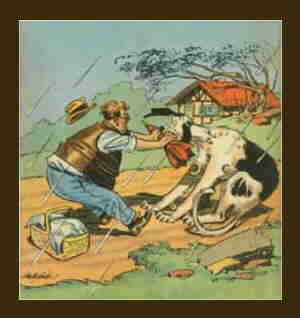
Napoleon was a big, clumsy, ungainly dog, most likely an approximation of an Irish wolfhound. As dogs go, he had a remarkably broad facial range, able to convey surprise, dismay, haughty disdain, grudging satisfaction and much more, as recognizable to readers as the expressions of any human character, and yet completely dog-like in every panel. Napoleon's alleged "master", Uncle Elby, was no more able to impose his will on the dog than was Si Keeler, on Maud the Mule. The difference was that Maud acted out of pure orneriness, whereas Napoleon was just playful, headstrong, and not overly concerned about any damage he might cause.

Elby actually preceded Napoleon in print. McBride's prior syndicated work, most of which bore his own name (e.g., McBride's Cartoon (1927), Clifford McBride's Pantomime Comic (1932), etc.) didn't have regular stars; but Elby, who was based on McBride's own uncle, Henry Elba Eastman, would turn up in them with increasing frequency. After a while, Elby's big, bumptious pooch began turning up with him.
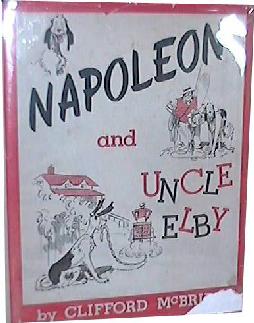
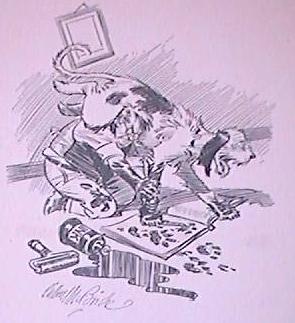
McBride lived until 1950, and his former assistant, Roger Armstrong (Ella Cinders, Scamp), continued the strip. Under Armstrong, it ran until 1961.
From: http://www.toonopedia.com/napoleon.htm
The historical significance of the names of the characters, Napoleon & Elby, is as follows:
On April 12, 1814, Napoleon picked up a pen and renounced his throne. Once master over an empire of seventy million people, he would now become the emperor of the tiny island of Elba.
Then, on February 26, 1815, he slipped off of Elba with a handful of soldiers. Two weeks later, Napoleon was in the French capital, and Louis XVIII had fled.
|
Comic Characters on Button-Pins - 1940's. 180 images - Long Download
www.comics.org - "Comic Database" - Search for old comics by Character, Title, Date, etc.
About "Famous Funnies" http://www.toonopedia.com/famous-f.htm
San Francisco Academy of Comic Art Collection - List of old comics, may be useful in tracking down something in the future